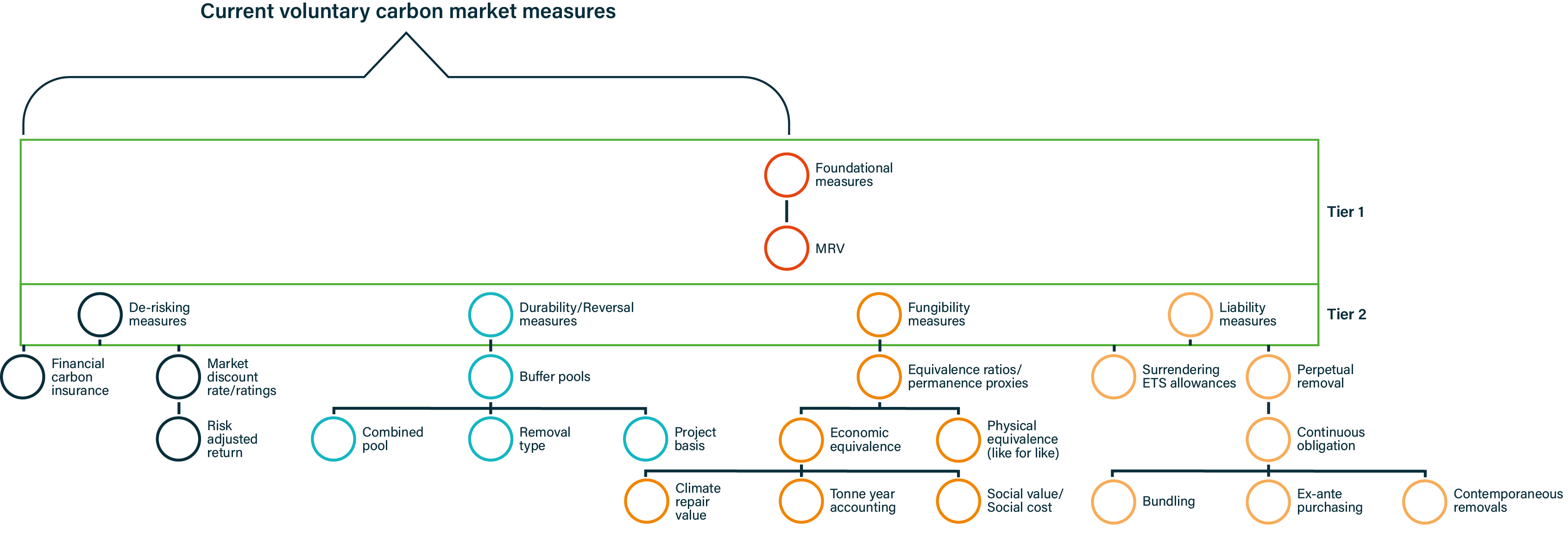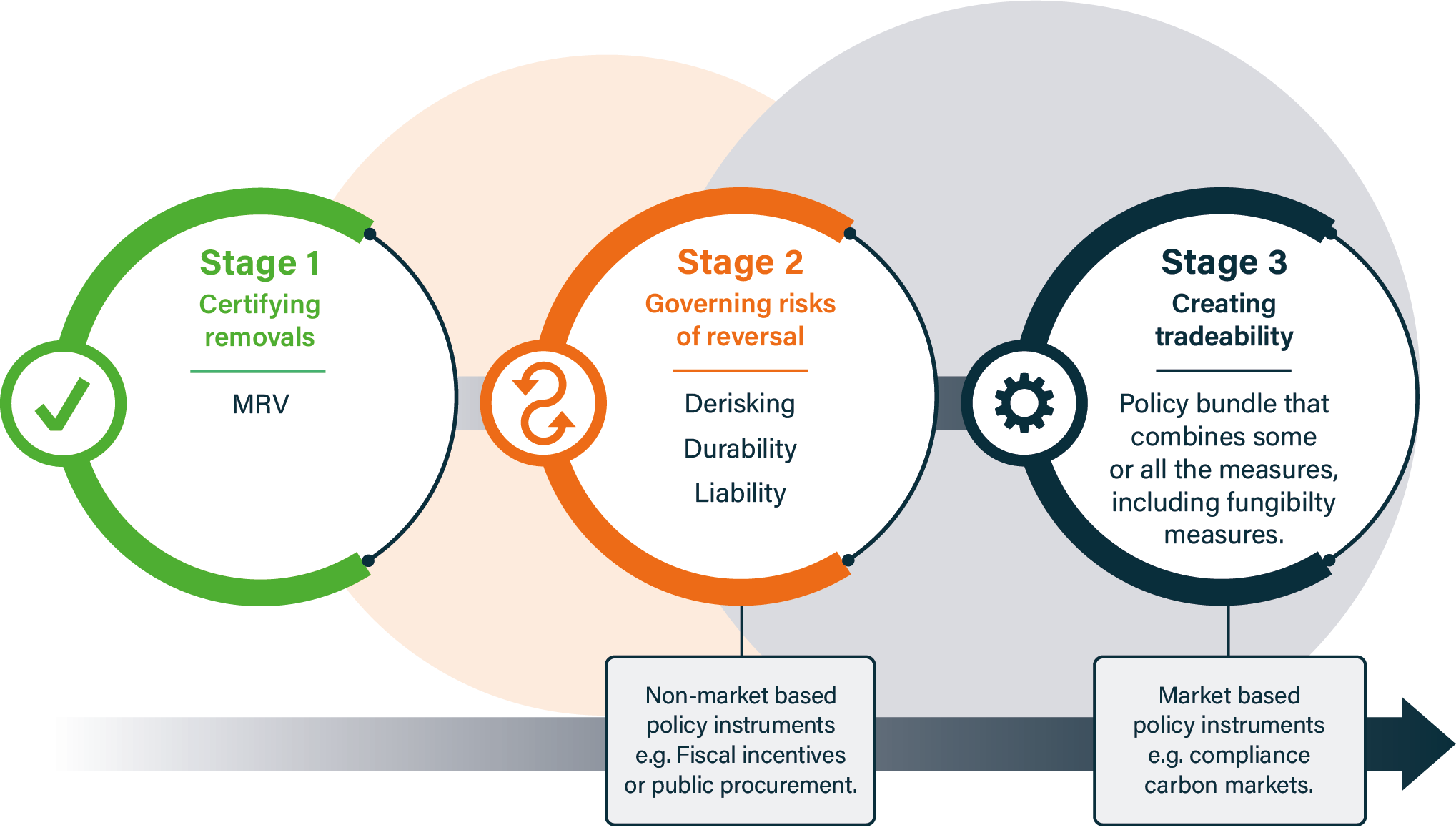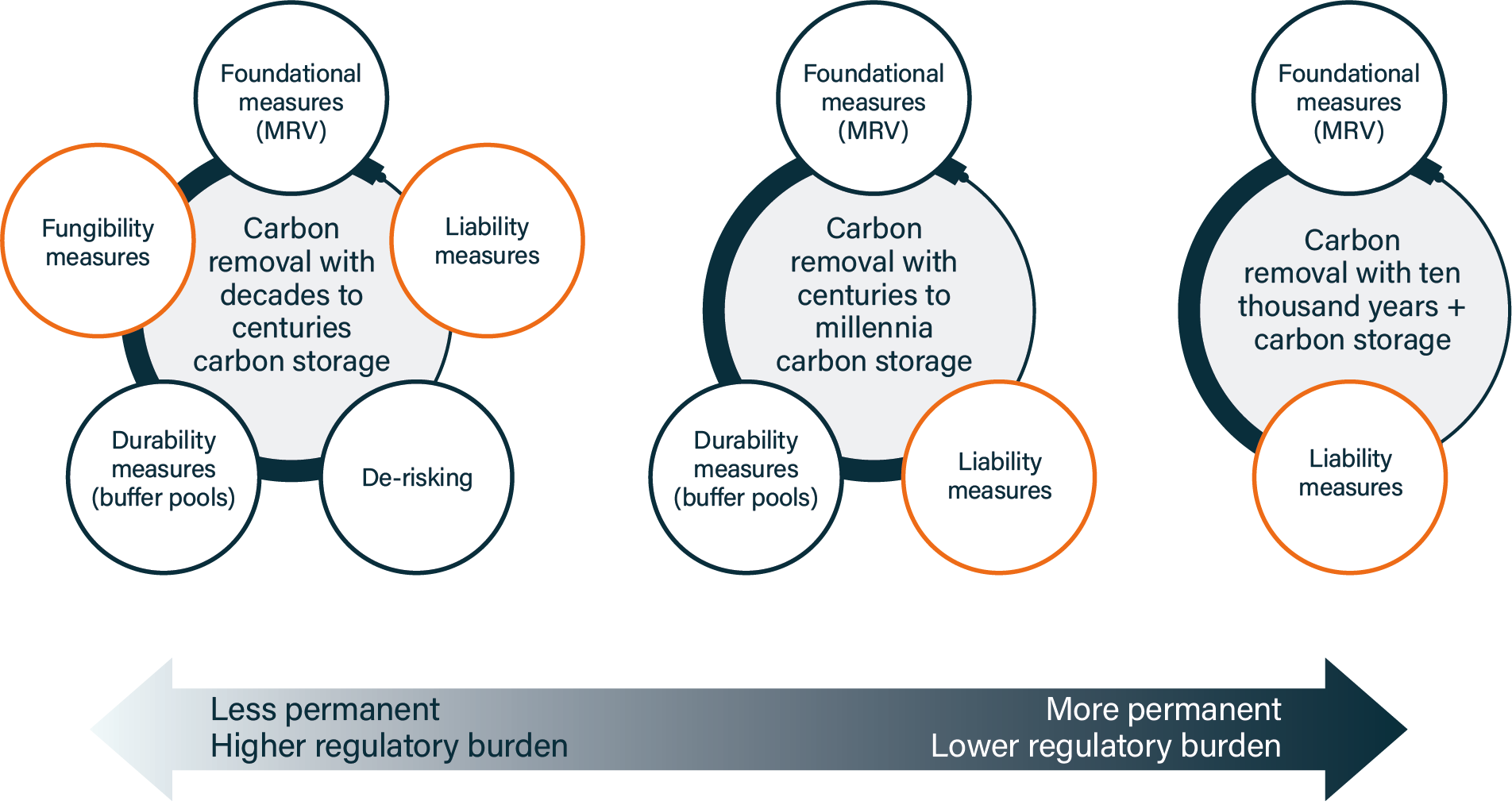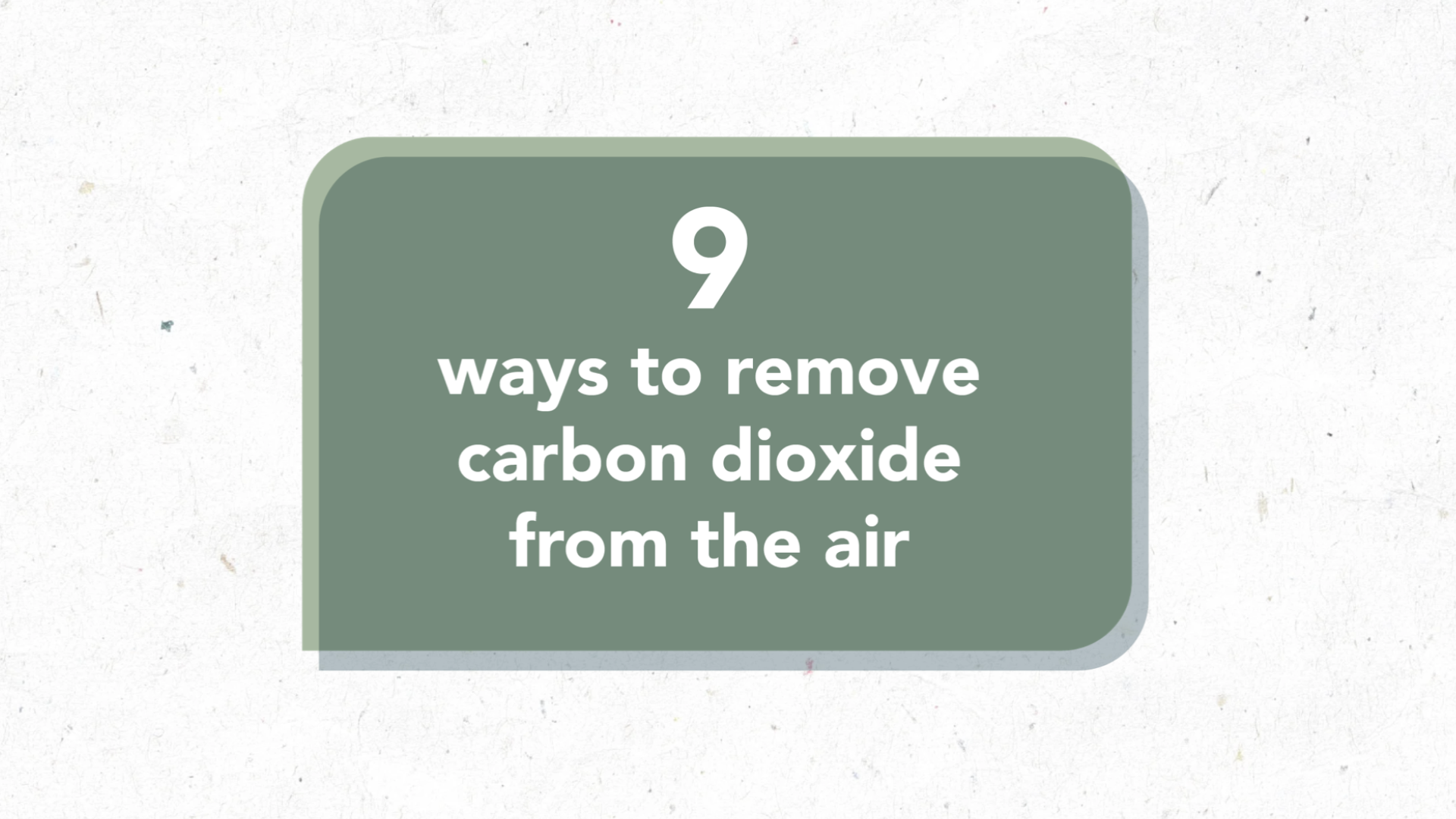By Josh Burke, London School of Economics and Dr Felix Schenuit, SWP Berlin based on their new report: Governing permanence of Carbon Dioxide Removal: a typology of policy measures.
Image: Climeworks’ DAC plant “Orca”, Iceland ©2022, Climeworks
How can we build momentum and scale in an industry that remains embryonic and controversial? And how can implementation strategies reflect that Carbon Dioxide Removal (CDR) methods have very different characteristics? These are two key questions in CDR governance that should be on the agenda as another COP begins. In this blog post, we explain why the governance of CDR permanence should be at the heart of emerging strategies for CDR integration into net-zero compatible policy, laying the groundwork for future multilateral negotiations on Article 6 of the Paris Agreement.
Momentum is growing
In just a few years, CDR has climbed up the climate policy agenda and an ecosystem of advocacy groups, civil society, business interests, researchers and other stakeholders has formed. Whilst CDR may not be a headline issue at COP28, this year’s formal UNFCCC negotiations, it will likely garner significant attention at the fringe events accompanying the formal talks, with a larger presence of CDR stakeholders than ever before.
Despite the recent CDR hype, deep emission reductions remain essential for any plausible pathway towards net zero. At the same time, CDR is an inevitable component of operationalising net zero targets.
For countries with emissions targets aiming for net zero or net-negative, the core governance question is not whether CDR should be mobilised, but which CDR methods governments want to see deployed by whom, by when, at which volumes and in which ways – raising a number of governance challenges for policymakers.
A huge range of potential methods exist. Despite the common feature of removing carbon dioxide, CDR methods can be very different. Implementation strategies need to reflect that different methods have very different characteristics in terms of their cost, technological maturity, storage duration, risk of reversal and additionality (i.e., that the carbon removed by a project or activity is over and above what would have happened in its absence). In particular, governing the different levels of CDR permanence remains a key challenge holding back the integration of CDR into existing and new policy frameworks.
Scaling up CDR requires robust oversight
Policy frameworks that govern CDR need to better account for the potential of impermanence, failure, or non-additionality which often arises from poor land use governance, extreme weather events, disease or the absence of strong institutions to enforce monitoring, reporting and verification (MRV). These issues persisted in earlier iterations of the voluntary carbon market (VCM) and the Kyoto Protocol’s Clean Development Mechanism (CDM), leading to numerous scandals. This is undermining confidence in market structures, halting capital flows, and hindering innovation and policy development – weakening incentives for permanent and high-quality removals. Measures that govern CDR permanence are therefore of critical importance to scale up and deliver the removal capacity required to achieve net zero targets.
Governing permanence of CDR
In a new report published today (30 November 2023), we attempt to address this knowledge gap by:
- Mapping different groups of measures related to efforts to govern for the permanence of different removals.
- Proposing a policy sequencing structure (where policy development takes place in incremental steps over time) for developing responsible and credible integration of CDR into climate policy.
- Exploring illustrative policy bundles for how individual measures outlined in the mapping and the sequencing can be combined and applied to CDR with different levels of permanence.
Typology of measures
Tier 1: MRV as a foundational measure
A practical starting point for any permanence accounting is monitoring, reporting and verification (MRV) schemes which assess the veracity of a carbon removal claim. MRV schemes can provide assurance that removals are additional and not harmful to local environments or communities. MRV is not considered an optional measure, but MRV should apply to all removals that are integrated in accounting and market structures. The challenge of establishing robust MRV schemes should not be underestimated, both scientifically and politically.
Tier 2: Building blocks of governing permanence
The second tier consists of more specific groups of measures (i.e. de-risking, durability, fungibility, and liability measures), each addressing distinct governance challenges that arise from different levels of permanence. That said, the measures should not be viewed as mutually exclusive but as complementary and interconnected.

Figure 1: Governing permanence: Typology of measures
Policy Sequencing: A three-stage approach
Policy sequencing should be a key feature of CDR policy. To govern permanence of CDR in a credible way, the following three steps should be incrementally taken.
- Certifying removals: Attain credible certification of removal activities via the foundational measure of a MRV scheme. Such a scheme is the prerequisite for any CDR policy that aims at integrating removal activities into climate policymaking.
- Governing risks of reversal: The application of such permanence measures is good practice for a broad range of non-market-based policy instruments and will play an important role in upcoming CDR policy initiatives. For example, if governments are attempting to scale CDR via subsidies per tonne removed or public procurement, measures like liability arrangements and buffer pools help to govern the risk of reversal.
- Creating tradeability: When CDR policy aims for the integration into market-based policy instruments such as compliance carbon markets, CDR policy will have to establish equivalence between CDR certificates and ETS allowances so that they can be traded.

Figure 2: Three-stage conceptual sequencing for CDR policy.
Illustrative policy bundles
To govern permanence, different CDR approaches require different policy support based on permanence factors. We propose three policy bundles, each addressing different permanence levels. The bundles are illustrative and not intended to be prescriptive. Indeed, they must be adaptable and respond flexibly as technologies mature and novel approaches emerge.
For example, CDR with ten thousand years or longer of carbon storage (e.g. Bioenergy with Carbon Capture and Storage, BECCS, and Direct Air Carbon Capture and Storage, DACCS) requires lewer accompanying policies since it has a high permanence level. Intuitively this feels appropriate since policymakers need to be conscious of not overburdening comparatively expensive, but more durable CDR, especially as these need to significantly scale. As less-permanent CDR presents more risks, naturally this requires a more substantive set of permanence measures. Foundational measures and liability measures need to apply to all CDR regardless of differing permanence and policy/market design.

Figure 3: Illustrative policy bundles. Small blue circles are those that are currently employed in the Voluntary Carbon Market. Small orange circles are additional measures that might be used in lieu or as a complement in a compliance carbon market.
Moving forward
With the new momentum of CDR, challenging governance issues are surfacing. The discursive hype at COP28 should not obscure the fact that most countries have not yet managed to address difficult questions of governance sustainability. However, national initiatives will be crucial for the future development of Article 6 of the Paris Agreement.
How the different permanence characteristics of CDR methods are incorporated into emerging CDR policies will not only determine the credibility of efforts to integrate CDR into existing climate policy instruments, such as compliance markets. It will also be a key factor in scaling up high quality removals. If less permanent removals are not adequately regulated, ‘cheap’ credits could lead to weaker incentives for more permanent CDR methods.
A variety of policy bundles and sensible sequencing strategies will be required to establish responsible governance of permanence – a prerequisite for the potential integration of CDR into compliance markets. Our report shows that the issue of permanence requires a carefully designed package of measures and policies. Despite the time pressures of scaling up CDR to help achieve net zero and the rapidly growing lobbying interests, the second step should not be taken before the first, and the governance challenges of non-permanent CDR should be identified and addressed. As countries face the same challenge, bilateral cooperation and exchanges should promote mutual learning.
This blog is based on a new report written as part of Josh Burke’s CO2RE-funded secondment at the UK Department for Energy Security and Net Zero (DESNZ). The views expressed in this blog represent those of the authors and not those of the institutions or funders.
Would you like to undertake a secondment in the CDR space? CO2RE can help fund you. Find out more here.





